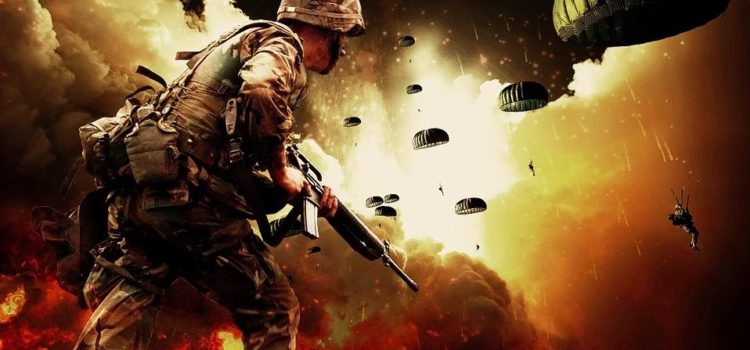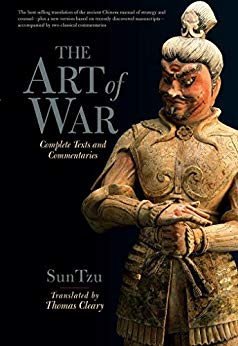

This article is an excerpt from the Shortform summary of "The Art of War" by Sun Tzu. Shortform has the world's best summaries of books you should be reading.
Like this article? Sign up for a free trial here .
The phrase “know your enemy” comes from Sun Tzu’s The Art of War. What did he mean when he said you should know your enemy? How did he suggest you do it? Sun Tzu says, “If you know the enemy and know yourself, you need not fear the result of a hundred battles.”
We’ll cover how knowing your enemy gives you the advantage. We’ll also cover what to look for in order to accurately read your enemy.
Know Your Enemy to Gain Advantage
Sun Tzu advises you know your enemy. To know your enemy, first understand its strengths and weaknesses.
First, you should assess these five traits regarding your forces. Then, assess these five traits for your enemy to size up the competition. “If you know the enemy and know yourself, your victory will not stand in doubt.”
- If you understand both your strengths and efficiency and those of your enemy, you can realistically compare the two and predict the likelihood of victory during conflicts.
- You should prepare to enter into conflict only when the outcome shows the likelihood of success for your side.
Many leaders are aware of these advantageous traits, but only those who incorporate them into their leadership practices will succeed.
- For instance, if you know your enemy is a savage leader, their relationship with the civilian population will likely include discord.
- If there is discord between civilians and leadership, there may be a lack of support for your enemy’s actions.
- This type of discontinuity can expose vulnerabilities in their tactics, which provides you with opportunities to attack.
Assessments and Advantages in Battle Strategy
The key to any successful battle strategy is the assessment of the five traits so as to know yourself and know your enemy fully. You must be willing to be pliable and adapt, when necessary, based on the information generated by this assessment.
Strategy should be developed as a consequence of advantage. A course of action that is not pliable will fail because the strategy cannot adapt to new events. A leader must assess each event that occurs and take advice to see where subsequent advantages lie and proceed accordingly.
Knowing the Enemy
As stated, knowing the strength of your enemy is vital. Once you have fully assessed your enemy’s capabilities, you must understand how to use the information to bolster your position.
If the enemy is operating from a foundation of fullness, meaning all facets of the five traits are viable, you should keep a close eye on them and start organizing your forces. Ensure that your side is equally “fulfilled” and aware of possible conflict. Avoid conflict until your enemy’s situation changes. This is one reason it’s important to know your enemy.
- When your enemy sees that you mean not to engage in the conflict, a gap may open up. They may relax and provide an opportunity suitable for attack.
- Also, your lack of action may begin to anger the opposing leadership.
- Continue to find ways to anger and irritate your enemy, for decisions made out of anger are often petulant and rash, which can lead to advantages for you.
Once you notice that your enemy is riled up or angry, back off to give them the delusion of superiority or success. They may become arrogant or lax in their judgment, from which carelessness extends.
- If the enemy deems that you are no longer a threat, they will underestimate you or dismiss you as an opponent.
- This arrogance creates the perfect environment for you to successfully attack them.
In order to know your enemy, as suggested by Sun Tzu’s The Art of War, look out for signs of the enemy’s behavior, interpret them to understand the enemy’s weakness, and react accordingly.
Know Your Enemy: Signs of Exhaustion, Thirst, or Hunger
- If the negotiator is irritable, it means they are exhausted.
- If the enemy requires fortification to stand upright, they are weak and hungry.
- If enemy troops are sent to fetch water for the group and those sent pause to drink first, their entire group is thirsty.
- If the enemy hands out numerous punishments, they are trying to motivate tired troops or are reacting to worn-out troops who are not able to follow commands.
Know Your Enemy: Signs of Fear
- If you see that the enemy has an opportunity to gain advantage but they do not react, they are weary.
- If you hear enemy calls in the night, they are communicating fear. Calling out in the night is a way of connecting with each other for security.
Know Your Enemy: Signs of Imminent Retreat
- If an enemy negotiator shows aggression and strength, don’t react. They may be trying to intimidate you because they aim to retreat.
- If the enemy hands out numerous rewards to their troops, they are trying to distract them from a loss of momentum.
Know Your Enemy: Signs of Poor Leadership
- If the enemy’s troops are discombobulated or angsty, their leader is not considered competent.
- If the enemy’s signals are all over the place, they lack unity and organization.
- If enemy troops are seen cavorting among themselves and fall behind in their duties, they are becoming disloyal to their leader.
Know Your Enemy: Signs of Manipulation
- If an enemy negotiator comes speaking of peace but carries no treaty, be wary. The enemy may be stalling to manage some issue with their troops or distract you from an ensuing attack.
- If the enemy divides its power and sends half to attack while the other half retreats, they are trying to manipulate you to chase them.
- If the enemy becomes aggressive but does not attack, be ready for an ambush. They are trying to distract you.
Know Your Enemy: Signs of Enemy Advantage
- Be mindful of your enemy’s positioning. If they leave from a strong position and move to another, there must be some advantage to them doing so.
- If the enemy orchestrates a mass of forces, expect their reinforcements to follow shortly.
- If the enemy depletes their food supplies and abandons essential cooking tools, they are at the end of their rope. The troops now have nothing to lose and will fight to the death.
Historical Example: Suspicious Surrender
When one of Cao Cao’s rivals surrendered to him, Cao Cao allowed the rival to return home. Shortly after, the rival returned to attack Cao Cao and killed Cao Cao’s son and nephew. Cao Cao also suffered an arrow injury.
The rival returned again with an armed force, but Cao Cao was successful in defending against them. On reflection, Cao Cao blamed his benevolence and negligence in letting the rival go for the fate of his family and army, advising his commanders to never make such an egregious error. “If you know the enemy and know yourself, you need not fear the result of a hundred battles.”
———End of Preview———

Like what you just read? Read the rest of the world's best summary of "The Art of War" at Shortform . Learn the book's critical concepts in 20 minutes or less .
Here's what you'll find in our full The Art of War summary :
- How to mislead your enemies to win the war
- Classic examples from Chinese history to illustrate Sun Tzu's strategies
- How to use spies to gather information and defeat your opponents







It’s kind of odd this thought just came to my mind and like I usually do yes you guessed it I Googled it and behold most definitely I will buy the book thank you
This book is relevant now. I read it 40 years ago and need to revisit it.
Lots of basic strategic thinking useful in daily business and political life.
in a rainstorm, whether you walk or run trying to
dodge the raindrops, one gets the same soaking either way